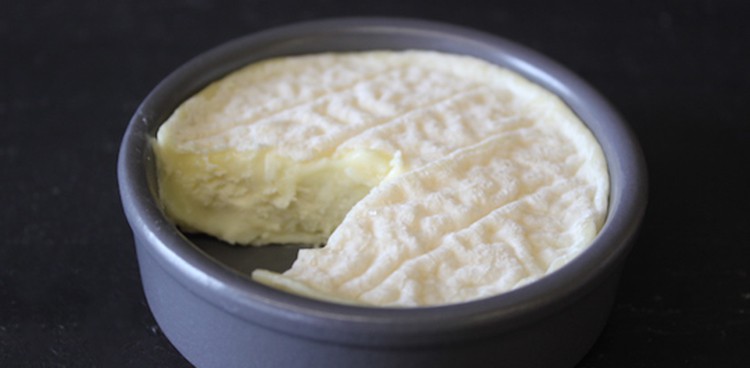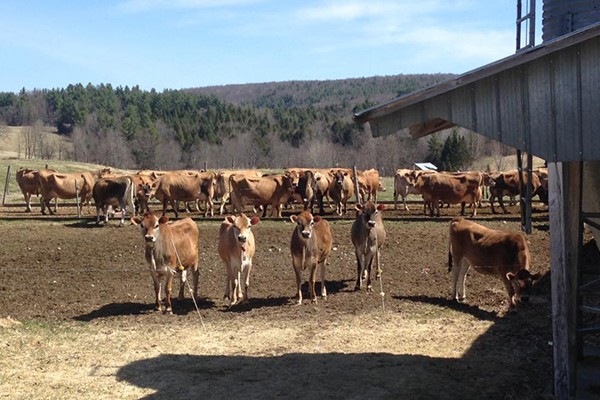
Vermont Creamery is about to wow your taste buds again. At this weekend’s Summer Fancy Food Show in New York City, the maker is unveiling the newest addition to its suite of award-winning cow’s and goat’s milk cheeses: St. Albans.
Modeled after the French St. Marcellin cheese, which dates back to the 15th century, St. Albans is not only Vermont Creamery’s first aged cheese made entirely from cow’s milk but also its very first non-GMO Certified cheese.
Ever since Whole Foods Market announced that it will require all products containing GMOs, or genetically modified organisms, to be labeled as such by 2018, cheesemakers have scrambled to filter out GMOs from their supply chains. This is no easy task: It’s not the cows, goats, or sheep that are genetically modified but the corn and soybeans that dairies large and small use to supplement their animals’ diets. Non-GMO feed itself is hard to come by, and even if a cheesemaker finds a reliable source it can be much more expensive than conventional feed—which makes the release of St. Albans quite the feat.
In Vermont Creamery’s case, the cheesemaker partnered with the St. Albans Cooperative Creamery—based in St. Albans, Vt., after which the new cheese is named—and Paul-Lin Dairy to get the ball rolling on non-GMO Certified Vermont milk.

Paul-Lin heifers enjoying the sunshine
Photo courtesy Paul-Lin Dairy
As Vermont Creamery co-founder Allison Hooper lays it out,
“St. Albans represents Vermont Creamery’s progress over the last thirty-two years; what began with a desire to bring a St. Marcellin–style cheese to the shelves of American grocery stores grew into our company’s efforts to gain our first non-GMO certification. With the release of this cheese, Vermont Creamery is modeling the transition of Vermont dairy farms to non-GMO feed.”
St. Albans starts with pasteurized Jersey cow’s milk that coagulates slowly over a period of 24 hours. Curds drain in cheesecloth overnight before being gently shaped into forms and left in an aging room for 11 days, where the cheese develops its wrinkly bloomy rind. Rounds of St. Albans are then transferred to (certifiably adorable) ceramic crocks and wrapped for sale.
The culture staff was lucky enough to taste St. Albans this past week—it was instantly beloved and gone in minutes. Aromas of rising dough and sour milk give way to a luscious creaminess with notes of salted butter and artichokes. The cheese pairs splendidly with a baguette, and Vermont Creamery suggests sticking the cheese, crock and all, in the oven for a delectable, gooey treat.
St. Albans won’t be available in retail stores until this October, but we can all survive in the meantime on some of Vermont Creamery’s other great cheeses, such as Bonne Bouche or Coupole.
For make details, tasting notes, pairing suggestions, and more, visit our Cheese Library entry for St. Albans here.




